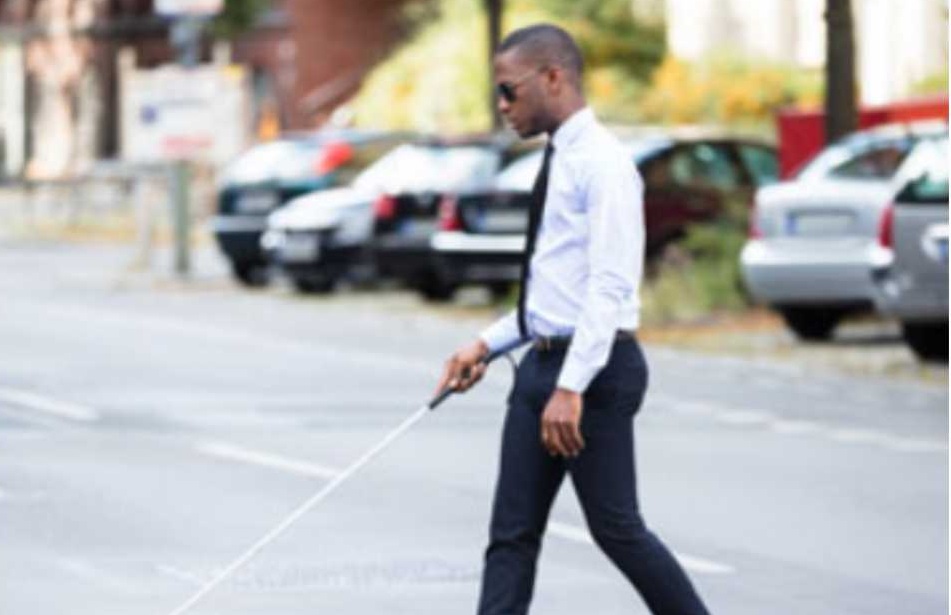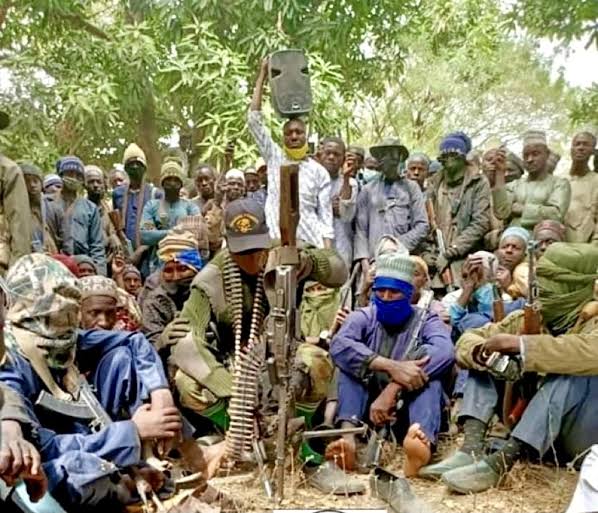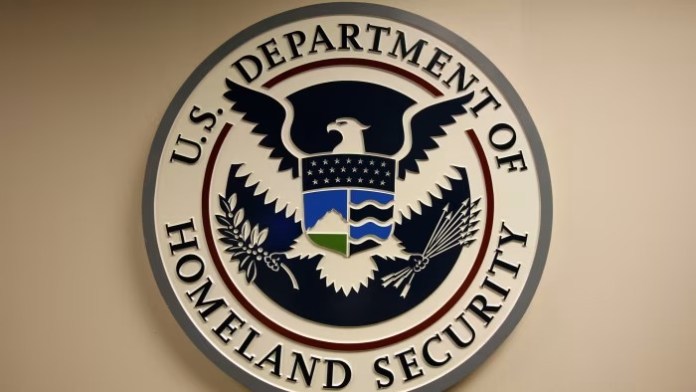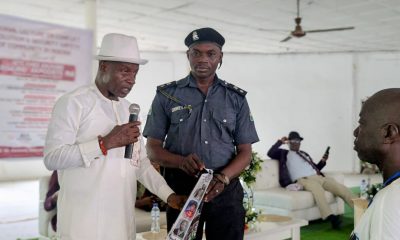News
SAD! We are worried if they will ever see – Mums of babies born blind

The pain of birthing babies with blindness is a burden on parents, particularly mothers. Wanting to know the mistakes made and seeking treatment options are the journeys they embark on. JANET OGUNDEPO writes on the stigma, challenges and hopes these mothers face in seeking care for their children
After 14 years of being childless, a Benue-born Fashion designer, identified only as Mary, finally held her bundle of joy.
The years before her daughter’s birth were filled with questions left unanswered, the secret tears that dribbled unbidden down her face as she lay on the bed with her husband at night.
Thankful for a supportive husband, Mary weathered the storms of her childlessness and welcomed the joy of her new baby with gusto.
However, three months after her daughter, whom she named God’s Time, was born, the 32-year-old noticed an unusual colour in her eyes.
“I noticed that her eyeballs were getting bigger but I reassured myself that one of her aunties also has big eyeballs,” Mary told PUNCH Healthwise.
She would later be told by an ophthalmologist that her child’s condition was congenital glaucoma.
“Aside from that, I notice that she avoids looking at the light in the room and bends her head inside the wrapper whenever I put her on my back and we go out. Also, I noticed that the black part of her eyes was looking gray, so I told my husband and pastor about my observation and we were advised to go to Federal Medical Centre, Abeokuta,” she added.
From there, she was referred to another tertiary hospital, this time one of the renowned teaching hospitals in Lagos.
There, God’s Time was diagnosed with congenital glaucoma and was scheduled for surgery to reduce the pressure on her eyes. The procedure would also ensure that God’s Time had a clearer vision.
Surprisingly, despite Mary’s visit to the hospital, she told PUNCH Healthwise that she was still advised by relatives to apply herbal treatments to her baby’s eyes.
“Some would say I should squeeze a particular leaf and drop the extract into her eyes. I refused. In fact, my husband would never agree that I do such,” God’s Time mother added.
Although thankful that the condition was quickly detected and hopes for perfect vision for her baby, Mary still wonders how the child got the condition.
“No one in mine or her father’s family has glaucoma, so I wonder how it came to be,” she stated.
God’s Time, who would soon celebrate her one-year birthday in grand style, continues to hit her baby milestones and grows.
The names of the parents and children have been changed to protect their identity.
Why a child can be born blind
Congenital glaucoma, cataract, anophthalmos (absence of an eyeball or ocular tissue) and congenital corneal opacity (clouding of the cornea) are conditions present at birth or identified shortly after.
These eye conditions could be hereditary, caused by a genetic disorder, infections and exposure to harmful substances during pregnancy, developmental issues during foetal development and retinopathy of prematurity.
Although there is no data in the country to determine the level of the burden of these conditions in Nigeria, congenital glaucoma and cataract seem to be more of the conditions.
Dr Kareem Musa
In an exclusive interview with PUNCH Healthwise, a Consultant Ophthalmic Surgeon and Paediatric Ophthalmologist at the Lagos University Teaching Hospital, Idi-Araba, Dr Kareem Musa, stated that congenital glaucoma, which is commonly noticed at birth or shortly after birth, is commonly sporadic in occurrence but could be familial/hereditary or due to genetic disorders.
He added that it could also occur as part of maldevelopment of the eye or systemic disorders.
Musa explained that the bulging eyeballs seen in affected children resulted from increased pressure in the eyes, which occurred when the fluid produced inside the eye (aqueous humour) is unable to drain properly through the channels in front of the eyes, leading to an accumulation and continuous build-up of the fluid and increased pressure and overtime made the eye pressure very high and, leading to eye damage.
The ophthalmologist stated that the increased pressure affects the optic nerve, noting that since the nerve does not usually regenerate, it leads to irreversible blindness.
Cataract discovered at three months
When 18-month-old Chidera, was three months, his mother, Mrs Effiong, noticed for the first time, a cloudy film covering his eyes.
She discovered that the black part of his eyes, the pupils, were covered with a milky film.
The 35-year-old said she had seen adults with such a condition but never believed a newborn could have such.
In her quest for answers, Effiong visited a private hospital and was referred to a tertiary hospital for specialist care.
“Those around me told me it was a spiritual attack and it was asked to go to church, I was also asked to do the traditional part. I went to the village and did some things but I am not going to talk about it,” she told our correspondent.
After returning from the village, Effiong returned to the hospital for continuous care of her child.
“He was booked for surgery in July last year, but we couldn’t come because I had a little attack and had to stay away,” the Point of Sales Operator and Hairstylist said.
After her recovery, another surgery session was booked in December, sadly, she lost her father and had to return to the village for the burial rites.
The mother of one stated that she refused to give up on orthodox treatment and had already paid for the surgery to remove the cataract from her son’s eyes.
Sadly, Effiong who lives and works on the Island in Lagos, had to close her shop and move to the mainland to stay closer to the hospital so she wouldn’t miss her son’s appointment.
Unarguably, the 35-year-old has put a pause on running her business for her child’s care.
Effiong strongly believes that after the surgery, Chidera will regain his sight, resume school and have a good life.
Lost sight at nine
Though the smiles filled the lips of a 34-year-old mother of two, Mrs Lawal, the pain in her voice as she expressed her worries over what could have caused her son’s congenital glaucoma rang through.
Vision in her nine year old, Tunde, has been completely affected and reduced to a bare perception of objects and people.
A late discovery and presentation is responsible for Tunde’s worsened eyesight.
But the fault was neither his nor his parents as Lawal stated that he was given birth to in a private hospital and they were unaware of an anomaly with his eyes.
Going down memory lane, she said, “It was discovered when he was three years old. That day, his grandmother carried him on her back to the market, and he began to cry when the sun hit his face. His grandmother thought he was tired of being backed and put him down. When he was on his feet, the seller who was selling something to her saw how he was avoiding the sun and asked the grandma what was wrong.
“She then told her to take the child to a General Hospital in Lagos and she wrote down the phone number of someone to call. It was at the doctor’s visit that we were told he had congenital glaucoma.”
After the diagnosis was made, Tunde underwent surgery to relieve the pressure in his right eye.
Sadly, by that time, vision had worsened in the left eye, therefore, no surgery was done.
The nine-year-old was placed on eye drops, which his mother dutifully applied every morning and night, regardless of the cost.
To ensure he lived an independent life and continued schooling, Tunde has now been sent to one of the Schools of the Blind, where he continues to thrive.
Although sad about her son’s situation, Lawal urged parents to be observant about their children’s eyes and visual behaviour, adding that they should visit a registered hospital for any concerns they had.
Subtle signs of eye problems in a baby
The paediatric ophthalmic surgeon highlighted signs of congenital defects and eye problems in infants as teary eyes, avoiding looking at the light, lack of response to light rays directed in the eyes, bulging eyeballs, cloudy or hazy film on the cornea and grayish colour of the pupils.
Dr Ismail Lawal
Also, a Consultant Ophthalmologist at the Federal Teaching Hospital, Birnin-Kebbi, Kebbi State, Dr Ismail Lawal mentioned, “If you’re breastfeeding a child and the child is not looking at your face, at three months, you know that there’s a problem because children will usually look at their mother’s face.
“If you’re giving the child a toy and the child is not interested; when you turn on the light in the house and the child closes the eyes; the child’s eye is tearing every time, these are not normal things. You need to quickly go to the hospital.”
Premature babies at increased risk
Although any child could be born with congenital blindness, the paediatric ophthalmic surgeon at LUTH, Dr Musa, stated that premature babies were at increased risk of congenital blindness referred to as retinopathy of prematurity (ROP).
A study conducted by Prof Dupe Ademola-Poopola, Dr Kareem Musa et al, titled, “Case Series of Retinopathy of Prematurity Blindness in Nigeria: A Wakeup Call to Policy Makers, Hospitals, Ophthalmologists and Paediatricians” discovered that inadequate ROP screening coverage portends a high risk for increasing cases of ROP blindness
The study findings showed that “About 90 per cent of the babies who became blind did not undergo ROP screening. It is crucial that all babies born at 34 weeks or earlier and have birth weight of less than1500 grams in public/private hospitals be screened for ROP to prevent this avoidable blindness in Nigeria.”
Why preterm babies are at risk
Speaking further with PUNCH Healthwise, Musa noted that there has been an increase in cases of retinopathy of prematurity (ROP), which if not quickly detected and continues unabated, could lead to retinal detachment and blindness.
He advocated a compulsory screening for retinopathy of prematurity in pre-term (premature) babies to ensure early detection and screening.
“What is done is, the moment you identify a preterm that fits into the criteria, three to four weeks after birth, we start the screening. We start looking at the back of the eye. Is there ROP or not? If there is no ROP, you see them every two weeks.
“If there is ROP, you decide, is it the one that we have to treat immediately? Is it the one that we just monitor and see whether nature is going to take its course? If it’s the one that we have to treat immediately, that’s the one that, if you don’t do anything, it’s an emergency, that’s the one that can lead to blindness.
“The moment the retina detaches due to ROP, yes, surgery can be done. The surgery is more difficult and expensive and in terms of prognosis/the likelihood for good vision, the guarantee is less. So, it is better for the ROP not to get to that stage.
“So we are seeing more of those cases now and the reason is because, in terms of the quality, the availability of equipment and expertise for neonatal care is much better. So more of these preterm babies are surviving compared to before when they don’t live long enough to detect those conditions,” the ophthalmic surgeon said.
Congenital blindness not death sentence – Ophthalmologist
Speaking further on the risk factors, Musa further noted that the consumption of herbal medications especially concoctions whose constituents are unknown and unprescribed orthodox medications, during the first trimester of pregnancy, could affect the development of the eyes or parts of the body.
“There are different types of glaucoma. But the common denominator, what we call the optic nerve, is actually getting damaged. And when it gets damaged, because it’s a nerve, it doesn’t usually regenerate. So all over the world, glaucoma is the commonest cause of irreversible loss of vision,” the paediatric eye doctor said.
He further noted that while congenital glaucoma is not a death sentence, blindness resulting from congenital glaucoma could predispose the child to delayed developmental milestones and life-threatening conditions like falls with head injury.
The Associate Professor of Ophthalmology at the College of Medicine, University of Lagos, Idi-Araba, further noted that aside from congential glaucoma, babies could also be born with congenital cataract, anophthalmos (absence of an eyeball or ocular tissue) and congenital corneal opacity (clouding of the cornea), among others.
Avoid prolonged labour
The associate professor stressed the need for pregnant mothers to avoid prolonged delivery, stating that it can make the brain suffer long periods without oxygen, leading to cerebral palsy and cerebral visual impairment if it affects the part of the brain in charge of vision.
He also said that children who develop meningitis could have their vision affected.
Musa urged pregnant women to deliver their babies in registered health facilities and under the care of skilled birth attendants, emphasising that the quality of personnel and care received during delivery, contribute to the early detection and treatment of these blinding ocular conditions.
He further noted that the economic status of many parents prevented them from accessing care despite early presentation, adding that some of them no longer returned after getting a diagnosis.
The don urged the government to intervene in ensuring eye care, especially for children, was affordable.
Musa assured parents that congenital blindness was not a death sentence, however, stating that children with cataracts needed immediate care to ensure their vision was restored.
“When you remove the cataracts, their vision comes back. In children, anything that affects their vision, the longer it takes for you to get it sorted out, the likelihood that they will develop a condition called Amblyopia as an added problem is high.
“What do I mean by that? If an adult has cataracts, the moment you do the surgery, vision is going to come back. So, if a child is born with cataracts and does not present early, the longer it stays there without intervention, the likelihood that they will develop Amblyopia is high. This means that after the surgery and light can get to the back of the eyes and glasses is given, you expect the eye to see, but vision does not improve because the child has developed Amblyopia.
“So you now need to start treating that Amblyopia and the longer it takes for you to intervene, you may not even be lucky with the reversal.”
He urged parents not to dismiss their children’s eye complaints and present early to the hospital when there was noticeable observations in the eyes.
Musa also corrected the notion that childhood blindness is caused by a spiritual attack, noting that the risk factors for the conditions are known and are medically explainable.
The ophthalmologist warned parents against harmful traditional practices and encouraged them to bring their children to the hospital whenever they discovered problems with their eyes.
Many believe a child can’t be blind – ophthalmologist
Speaking further, the FMC Kebbi ophthalmologist, Lawal, stated that only a few people realised and understood that babies could be born with blindness.
He noted that the lack of awareness about the conditions prevented many, even some health practitioners, from examining the eyes and vision of newborns while checking other sense organs.
Lawal said, “Many believe that a newborn can’t see at that age and that it will take some time to be able to assess their vision and things like that. There are even situations where parents go to health workers and complain that they think their child’s eye has issues and the health worker will just dismiss it and say, no, don’t worry, the child is still a baby, the child will grow it. By that time, it’s becoming too late for anybody to intervene and do anything.”
He further noted that some congenital blindness, such as cataracts and malformation of the eyelids, could be reversed following assessment by an ophthalmologist and immediate intervention.
The ophthalmologist also stated that a greater extent of congenital glaucoma, congenital nerve damage congenital dystrophy of the retina was most of the time irreversible.
Lawal, who is also the Nigerian Medical Association Chairman for Kebbi State, emphasised the need for immediate rehabilitation of children with irreversible blindness to ensure they acquire functional skills.
Most cases treatable in tertiary hospitals
The eye expert also said that most cases of reversible congenital blindness in the country were treatable, especially when presented early.
He further noted that the lack of awareness about the conditions and knowledge about the appropriate health facility were factors limiting access to care in the country.
The ophthalmologist added that the financial status of the parents and caregivers to afford the treatment options also contributed to delayed care and treatment.
Lawal advocated active health insurance coverage for citizens to ensure easy access to eye care services.
He added, “The major problem we have is inadequate manpower. And that has to do essentially with the poor remuneration of health workers. If the health workers are appropriately paid, it may encourage many of them to stay back and that can improve their availability. For the few that are available, it will be difficult for them to abandon their clinic and go about on sensitisation tours.
“But I can tell you that the Ophthalmological Society of Nigeria, Optometrist Association of Nigeria and the National Association of Ophthalmic Nurses are doing a whole lot in terms of advocacy and awareness campaigns, especially when it comes to World Health Days. On World Sight Day and World Glaucoma Week, they carry out a whole lot of jingles. It’s a whole lot that is being done and still needs a whole lot.”
The Kebbi State NMA chair called for collaboration between the government, non-governmental organisations, individuals, civil society groups, the media and health workers to increase public awareness and education about health-related information to the public.
“So that people can be aware and know where to go and seek help when they notice one or two things abnormal about the child,” the eye doctor added.
News
Banditry:” I was chained for 32days while in their den, killed my wife as I watch-Nat’l Assembly DD narrates experience

A Deputy Director at the National Assembly Commission, Michael Adesiyan, has narrated his near-death experience in the hideout of bandits.
Adesiyan was abducted from his Chikakore residence in Kubwa, a suburb in the nation’s capital, alongside his wife on January 26th, 2025 before he was rescued on April 7.
The civil servant narrated his ordeal to journalists at National Counter-Terrorism Centre, Abuja, when fresh 60 kidnapped victims, who were rescued by the security forces were presented to the National Security Adviser, Nuhu Ribadu.
Adesiyan called on the federal government to immediately look for a way to disarm the criminals and educate them, and possibly reintegrate them back to the society, adding that “the bandits don’t know what they are doing.”
According to him, his abductors were between the ages of 17 and 20, and they were stark illiterate people who were not aware of what they were doing, and could not even count N1 million let alone hundreds of millions they were asking as ransom.
He specifically said they were chained for 32 days he spent in the abductors’ den, adding that they killed his wife in his presence.
“I want to thank the government for rescuing us. I was chained for 32 days. I want to advise that the government should find away to disarm or arrest them (bandits), instead of confronting them.
“They can send them to school. Some cannot even count one million. They are stark illiterates. They are young people of ages 17 and 21. They don’t know what they are doing.
“So if they can bring them out, if they want to learn work (apprenticeship), they can let them do, retrain them, reorientate them, that they can be useful to themselves.
“My advice is to, instead of killing them, arrest them, reorientate them. If you want to educate them, they can then work. That’s my advice,” he said.
When asked why they were in a rush to tell their family members to pay ransom, he said, “When they kill someone in your presence, you would give them anything they want.
“For instance, they killed my wife in my presence. If they request your head in that situation, you will give it to them.”
Earlier, while giving a breakdown, the Coordinator, National Counter-Terrorism Centre, Maj. Gen Adamu Laka said the victims comprising 35 males and 25 females, were rescued on Monday April 7, by troops of 1 Division of the Nigerian Army, in a coordinated operation supported by other security and intelligence agencies.
News
US revokes more than 500 foreign student visas

No fewer than 500 foreign students have had their US visas revoked in recent weeks, as Donald Trump’s administration doubles down on its crackdown on universities.
Nafsa, a network of universities and individuals engaged in international education and exchanges, told the Financial Times on Tuesday it had identified 500 visa revocations by compiling reports from higher education institutions across the US.
“This is uncharted territory on so many levels,” Fanta Aw, chief executive of Nafsa said. “It’s at an unprecedented level and it’s quite concerning because there is a lack of clarity which is creating anxiety.”
The Department of Homeland Security and the Department of State are implementing a wave of actions against university students across the country. Institutions are often unaware that their students have been targeted so cannot easily track their cases or offer support.
The state department’s visa revocations require students to leave the US and reapply for visas after fresh scrutiny. Separately, the homeland security department has triggered “status termination”, Aw said. In both cases, she added, the processes for appeal were unclear.
“There will be a tsunami of legal cases coming,” she warned.
Multiple reports have arisen of foreign students and university employees being taken to detention centres and subsequently facing deportation.
A number of universities have issued warnings to students and faculty against travelling abroad for fear of arbitrary questioning or detention on returning to the US.
Aw said reports of visa revocations had spiralled from students at elite universities — including Stanford, Harvard and Columbia — to a far wider range of higher education institutions across the country. They targeted many different nationalities for a variety of reasons, including for traffic violations.
Since Trump’s election, a growing number of US-based faculty have sought jobs elsewhere, and increasing numbers of high school and college students are applying to universities abroad.
The Central European University in Vienna on Tuesday said US applicants for its programmes in the upcoming academic year had jumped one-quarter, while the University of Toronto reported a “meaningful” rise compared to past years.
On Monday, 16 associations of US universities called for a briefing from the homeland security and state departments, after uncoordinated orders from the authorities requested students to “self-deport”.
The group said the orders contained “no additional information about how to appeal this decision or verification to ensure that mistakes are not being made in identifying these individuals”.
The association warned of the implications for the country given the 1mn international students attending US colleges and universities, who contributed an estimated $43.8bn to the economy, created 375,000 domestic jobs and contributed “to institutions’ intellectual vibrancy and the global literacy of domestic students”.
The homeland security department did not reply to a request to comment.
News
Japa: Nigeria loses $366m as 16,000 doctors move abroad

The Coordinating Minister of Health and Social Welfare, Prof Muhammad Pate said over 16,000 Nigerian doctors have left the country in the last five to seven years to seek greener pastures in other countries.
Prof Pate also said the doctor-to-population ratio is now 3.9 per 10,000 in the country, while the estimated cost of training one doctor exceeds $21,000.
This was as he lamented that nurses and midwives who left have also thinned the number of healthcare workers in the country.
The minister disclosed this at the seventh annual capacity building workshop of the Association of Medical Councils of Africa in Abuja on Tuesday with the theme, “Integrated healthcare regulation and leadership in building resilient health systems.”
According to him, an increasing number of Nigeria’s talented healthcare professionals aspire to work in other countries, driven by factors such as economic opportunity, better working conditions, more advanced training, and superior research environments abroad.
He said the migration of health professionals from developing countries is not new, but it has accelerated in recent years.
“In Nigeria alone, over 16,000 doctors are estimated to have left the country in the last five to seven years, with thousands more leaving in just the past few years. Nurses and midwives have also thinned in numbers. The doctor-to-population ratio now stands at around 3.9 per 10,000—well below the suggested global minimum.
“But this trend is not just about people leaving. It represents a fiscal loss.
The estimated cost of training one doctor exceeds $21,000—a figure that reflects the magnitude of public financing walking out of our countries. It deeply affects our health systems—leaving many of our rural communities critically underserved.”
He, however, emphasised that the phenomenon offers an opportunity to rethink and reshape the policies, to manage the valuable health workforce in ways that benefit our countries first and foremost.
“In Nigeria, guided by the vision of President Bola Ahmed Tinubu, who was appointed by African Heads of State as the AU’s Continental Champion for Human Resources for Health and Community Health Delivery—we are pursuing a new direction. His vision is that Nigeria becomes a prosperous, people-oriented country, contributing to a peaceful and thriving continent. Not a standalone Nigeria, but a Nigeria that is interlinked with all our neighbours and sister countries. Under the Renewed Hope Agenda, and within the framework of the Nigeria Health Sector Renewal Investment Initiative, we have embraced a new path—combining strategic realism with visionary ambition.
“The National Policy on Health Workforce Migration is a cornerstone of this path. It is designed to address health workforce migration with dignity—dignity for health workers, for the country, and for the profession. It is data-driven, evidence-guided, and signals a clear direction. This is not a restrictive policy, nor is it one born out of resignation. We understand that the global health workforce shortage is at 18 million, and countries in the Global North face their own human resource crises due to demography and other factors. But our response is based on stewardship—balancing the rights of health professionals to seek opportunities abroad with our duty to protect the integrity and viability of our national health system.
“The objectives are clear. To retain and motivate health workers currently serving in Nigeria—thousands of whom work under difficult conditions; to establish ethical norms and explore bilateral frameworks for recruitment, aiming to correct global asymmetries; to expand training capacity—not only for domestic needs, but to contribute to global workforce needs, to enable structured reintegration for the thousands of Nigerian professionals abroad; and to strengthen governance, improve regulatory coordination, and build real-time data systems.”
He urged Africa to lead in forging a new global compact on health workforce mobility—anchored in pan-African training and accreditation standards; shared planning tools, evidence, and data; continental negotiating platforms with destination countries; and sustained investments in the people who care for our people.
The President of AMCOA, Prof Joel Okullo, stressed the importance of collaboration among African countries to tackle healthcare challenges and improve regulation and leadership across the continent.
He expressed the belief that the outcome of the workshop would produce actionable strategies to improve healthcare services across Africa.
“This year’s theme highlights our commitment to tackling the diverse array of challenges within the health regulatory landscape. It seeks to empower AMCOA members and associate members with the wisdom and skills needed for informed strategic and operational decisions in the coming year.
“In this intricate regulatory tapestry, our discussions will illuminate strategies and insights that will bolster regulators’ capabilities. Our focus will revolve around managing health workforce mobility, improving credentialing and information data management systems
“Let us embark on this journey with enthusiasm and a shared sense of purpose. Our collaborative efforts today and over the next few days will lay the groundwork for transformative changes that will resonate across the healthcare landscape of Africa,” he noted.
The Registrar of the Medical and Dental Council of Nigeria, Dr Fatima Kyari, while welcoming participants to the event, noted that it was Nigeria’s first AMCOA workshop while commending the alignment of leadership towards the shared goal of patient safety.
The Board Chairperson of MDCN, Prof Afolabi Lesi highlighted the need for healthcare regulators to uphold global standards while adapting to local contexts.
Lesi, who is also the Chairman of the Local Organizing Committee for the workshop addressed the challenges of fragmented professional relationships that hinder implementation and compromise patient care.
“The reality is that while we have committed and clear directions at the level of governance, implementation of actions is bedeviled by the fractioned and fractious relationship among health workers who ought to be working as a team, with the patient (well-being and safety) as the primary focus of all our actions,” he said.
Photo caption: Members of AMCOA; the Registrar of MDCN, Dr Fatima Kyari; the Board Chairperson of MDCN, Prof Afolabi Lesi; the Coordinating Minister of Health and Social Welfare, Prof Muhammad Pate; the Minister of State of Humanitarian Affairs and Poverty Reduction, Dr Yusuf Sununu; and other AMCOA members.
-

 News19 hours ago
News19 hours agoOERAF held memorial lecture on conflict resolution, security/safety of community in Nigeria
-

 News5 hours ago
News5 hours agoUS revokes more than 500 foreign student visas
-

 News11 hours ago
News11 hours agoBandits have seized control of 64 communities in Plateau – Gov Muftwang
-

 News7 hours ago
News7 hours agoIbas picks administrators for 23 Rivers LGs(SEE list)
-

 News19 hours ago
News19 hours agoHoR Minority Caucus decries killings in Plateau, Benue states, urges immediate presidential decisive actions
-

 Economy11 hours ago
Economy11 hours agoMobile Money transactions hit $1.68trn in one year
-

 News11 hours ago
News11 hours agoAir Peace unveils new process for boarding passengers
-

 Metro7 hours ago
Metro7 hours agoINSECURITY! Gunmen Attack Abuja-Bound GUO Bus, Passengers Injured





